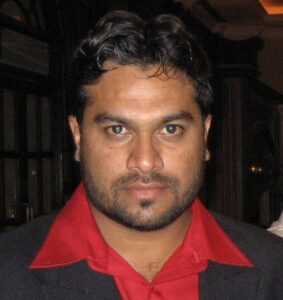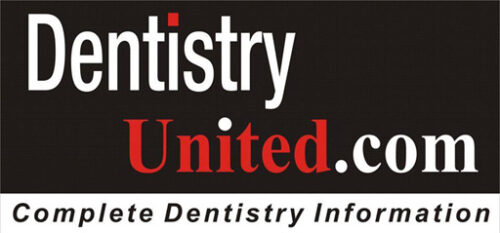Prologue
It was just past 6 a.m., and I was sitting on the balcony of a quiet resort in the Malnad region, sipping on a cup of green tea. The mist was still clinging to the trees, birds beginning their conversations, and everything around felt calm — exactly the kind of silence that helps you think clearly.
I casually checked my phone — a habit I should probably break on holidays — and saw a new message pop up in one of the dental specialist groups I’m part of. A friend had shared an AI-generated crown design using some new software. It looked clean and textbook-perfect at first glance, but within minutes, the group began dissecting it. A prosthodontist pointed out the marginal fit issues, another specialist flagged concerns with the occlusion, and a lab technician chimed in about how such designs often ignore material behavior in real-life milling.
What struck me wasn’t the flaws — it was how confidently the software had created something that looked ‘acceptable’ but felt… empty. No context, no character, no clinical empathy. Just lines and curves mimicking a molar.
And that’s when I knew I had to write this.
This blog isn’t an anti-AI rant. It’s a reminder — to myself and to my peers — that dentistry is, and always should be, more human than machine.
— Syed Nabeel
1. The Limits of Algorithmic Design in Crowns, Bridges, and Aligners
The fabrication of crowns, bridges, and aligners is not merely a computational exercise. It is a synthesis of biomechanics, aesthetics, and patient-specific context. While AI-driven CAD/CAM systems excel at optimizing occlusal geometry or aligner sequencing, they fall short in capturing:
- Tactile expertise: The nuanced judgment of a seasoned clinician assessing occlusal dynamics or marginal fit cannot be distilled into algorithms. For instance, a crown’s longevity depends on understanding bruxism’s impact on material wear—a subtlety AI often overlooks.
- Patient-specific factors: Neuromuscular variations, periodontal health, and temporomandibular joint constraints defy standardized templates. AI may propose an aligner trajectory, but it cannot intuit the biological limits of ligament remodeling.
- Cultural and aesthetic nuance: A smile’s harmony reflects ethnicity, age, and personality—variables that require human perception beyond data-driven patterns.
In healthcare, IBM’s Watson for Oncology misjudged treatment plans due to insufficient contextual understanding of patient histories, leading to recommendations misaligned with clinical realities (Somashekhar et al., 2018). Similarly, in dentistry, over-reliance on AI risks restorations that are technically precise but biologically or aesthetically deficient.
2. The Fallacy of AI Precision
AI thrives on pattern recognition, not clinical judgment. It delivers solutions based on aggregated data, not individualized care. This gap is evident in:
- Over-engineered restorations: AI may prioritize idealized occlusal schemes, ignoring pragmatic compromises needed for patients with atypical anatomy or financial constraints.
- Erosion of critical thinking: Over-dependence on automation dulls a dentist’s ability to deviate from protocol when clinical intuition demands it.
- False confidence: AI’s polished outputs can mask underlying approximations, as seen in finance, where algorithmic trading models failed to predict the 2010 Flash Crash due to unmodeled market dynamics (Kirilenko et al., 2017).
A crown may fit perfectly in a digital model but fail under the stress of a patient’s parafunctional habits if the algorithm overlooks subtle clinical cues.
3. The Irreplaceable Human Element
Dentistry is as much an art as a science, rooted in empathy and contextual awareness. Consider:
- A patient seeking smile correction post-trauma, where emotional healing outweighs cosmetic perfection.
- A budget-constrained individual requiring a balance between function and affordability.
- An elderly patient needing minimal intervention tailored to comorbidities.
These scenarios demand human insight—empathy for a patient’s unspoken fears, instinct honed by experience, and context that no algorithm can parse. In autonomous driving, over-reliance on AI led to fatal errors when systems failed to interpret ambiguous human behaviors, such as a pedestrian’s hesitation (NTSB, 2018). Similarly, AI in dentistry cannot replicate the clinician’s ability to sense a patient’s needs beyond the scan.
4. The Perils of AI in Academic Research
The use of large language models (LLMs) like ChatGPT for academic tasks—literature reviews, manuscript drafting, or data synthesis—poses significant risks:
- Fabricated references: LLMs are notorious for generating plausible but nonexistent citations, undermining scholarly integrity (OpenAI, 2023).
- Superficial analysis: AI can summarize studies but lacks the capacity to critique study design, bias, or journal credibility—critical for evidence-based dentistry.
- Erosion of originality: Overuse of AI-generated content risks producing derivative work, diminishing the clinician’s intellectual contribution.
In journalism, AI-generated articles have propagated misinformation due to unchecked outputs (Diakopoulos, 2020). Dentistry must resist the same.
5. AI in Dental Education: A Double-Edged Sword
Integrating AI into dental curricula offers benefits but carries risks that must be managed:
| Benefit | Risk |
|---|---|
| Rapid access to global protocols | Disconnect from local patient demographics and clinical realities |
| Enhanced simulation of procedures | Atrophy of manual dexterity and clinical judgment in live settings |
| Data-driven case studies | Overload with unfiltered information, fostering shallow understanding |
Dental education must remain principle-driven, not technology-driven. AI should augment—not dominate—the development of clinical acumen. In aviation, over-automation led to pilots’ diminished situational awareness, contributing to crashes like Air France Flight 447 (BEA, 2012). Dentistry risks a similar fate if we over-rely on digital tools.
What Really Matters : Preserving the Art and Science of Dentistry
AI holds immense potential to streamline workflows and enhance precision. Yet, it is not a panacea. Dentistry remains a biological art, a discipline of human-centered healing. Cross-sector lessons—from healthcare’s algorithmic missteps to finance’s over-optimizations—remind us that technology must serve, not dictate, our practice.
Dentists must lead this integration with awareness, humility, and boundaries. Embrace AI as a tool, but never cede your clinical judgment or empathy. Your hands, your mind, and your heart remain the soul of dentistry.
References
- BEA (2012). Final Report on Air France Flight 447. Bureau d’Enquêtes et d’Analyses.
- Diakopoulos, N. (2020). Automating the News: How Algorithms Are Rewriting the Media. Harvard University Press.
- Kirilenko, A., et al. (2017). “The Flash Crash: The Impact of High-Frequency Trading.” Journal of Finance.
- NTSB (2018). Collision Between a Car and an Autonomous Vehicle. National Transportation Safety Board.
- OpenAI (2023). Technical Report on LLM Limitations.
- Somashekhar, S., et al. (2018). “Watson for Oncology: A Review.” The Lancet Oncology.

Author: Dr. Syed Nabeel, BDS, D.Orth, MFD RCS (Ireland), MFDS RCPS (Glasgow) is a clinician-scholar whose professional trajectory spans over a quarter century at the intersection of orthodontics, neuromuscular dentistry, and digitally driven diagnostics. As the Clinical Director of Smile Maker Clinics Pvt Ltd, he has articulated a refined philosophy of care that integrates anatomical exactitude with contemporary digital modalities, particularly in the nuanced management of temporomandibular disorders, esthetic smile reconstruction, and algorithm-guided orthodontic therapy. Grounded in the principles of occlusal neurophysiology, his approach is further distinguished by an enduring commitment to AI-enhanced clinical workflows and predictive modeling in complex craniofacial therapeutics. In 2004, Dr. Nabeel established DentistryUnited.com, a visionary digital platform designed to transcend clinical silos and foster transnational dialogue within the dental fraternity. This academic impetus culminated in the founding of Dental Follicle – The E-Journal of Dentistry (ISSN 2230-9489), a peer-reviewed initiative dedicated to the dissemination of original scholarship and interdisciplinary engagement. A lifelong learner, educator, and mentor, he remains deeply invested in cultivating critical thought among emerging clinicians, with particular emphasis on orthodontic biomechanics and the integrative neurofunctional paradigms that underpin both form and function.

